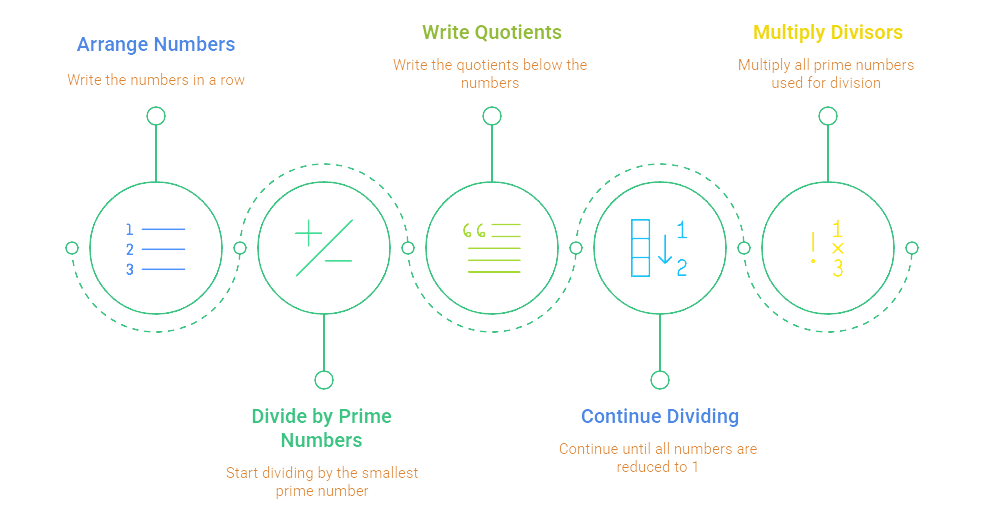Least Common Multiple (LCM) Calculator
Least Common Multiple (LCM)
Calculate square roots, cube roots, and more.
LCM Result
LCM of given positive numbers will be displayed here!
Calculation Steps
Least Common Multiple
A comprehensive guide about Least Common Multiple (LCM)
What is LCM?
The Least Common Multiple (LCM) of two or more integers is the smallest positive integer that is divisible by each of the given numbers without leaving a remainder. LCM is a fundamental concept in number theory and is often used in problems involving fractions, ratios, and scheduling (e.g., finding when events that occur at different intervals will happen simultaneously).
Types of Ways to Find LCM
There are several methods to calculate the LCM of two or more numbers. Here, we’ll explore two common approaches: the Prime Factorization Method and the Division Method (also known as the ladder method).
1 Prime Factorization Method
In this method, we break down each number into its prime factors, then take the highest power of each prime that appears in the factorizations and multiply them to get the LCM.
Steps to Calculate LCM By Prime Factorization

Example: Find the LCM of 12 and 18.
2 Division Method (Ladder Method)
In the division method, we divide the numbers by their common prime factors step-by-step until no further division is possible, then multiply all the divisors to find the LCM.
Steps to Calculate LCM By Division Method

Example: Find the LCM of 12 and 18.
Click the Clear button to start the calculation from starting and all the fields including result, calculation steps will be reset.
Frequently Asked Questions (FAQ)
Can LCM be calculated for more than two numbers?
Yes, LCM can be calculated for any number of integers. Both methods (Prime Factorization and Division) can be extended to handle multiple numbers by applying the same logic iteratively.
What is the relationship between LCM and GCD?
For two numbers \(a\) and \(b\), the product of their LCM and GCD (Greatest Common Divisor) equals the product of the numbers: LCM(a, b) × GCD(a, b) = a × b.
What if one of the numbers is 0?
The LCM of 0 and any number is undefined in the context of positive integers because 0 does not have a meaningful set of multiples in this sense.
Which method is faster for large numbers?
The Division Method is often faster for larger numbers because it avoids the need to fully factorize each number into primes, especially if the numbers share many common factors.
- EMI Calculator
- Personal Loan EMI Calculator
- Car Loan EMI Calculator
- KreditBee Personal Loan EMI Calculator
- SBI Personal Loan EMI Calculator
- IndusInd Personal Loan EMI Calculator
- HDFC Personal Loan EMI Calculator
- BOB Personal Loan EMI Calculator
- AXIS Personal Loan EMI Calculator
- ICICI Personal Loan EMI Calculator
- IDFC Personal Loan EMI Calculator
- Bajaj Finance Personal Loan EMI Calculator
- PNB Personal Loan EMI Calculator
- Mudra Loan Calculator (PMMY)
- Down Payment Calculator
- Bike EMI Calculator
- IPhone EMI Calculator
- Auto EMI Calculator
- Two Wheeler EMI Calculator
- Activa EMI Calculator
- Royal Enfield EMI Calculator
- Home Loan Calculator
- Home Loan Calculator
- IndusInd Home Loan Calculator
- ICICI Home Loan Calculator
- BOB Home Loan Calculator
- PNB Home Loan Calculator
- Kotak Home Loan Calculator
- Axis Home Loan Calculator
- LIC Home Loan Calculator
- IDFC Home Loan Calculator
- HDFC Home Loan Calculator
- Canara Home Loan Calculator
